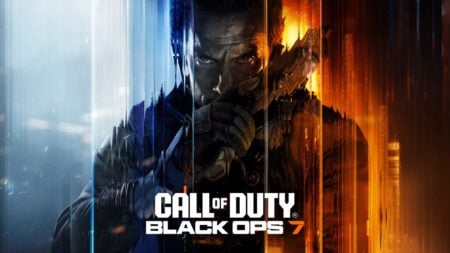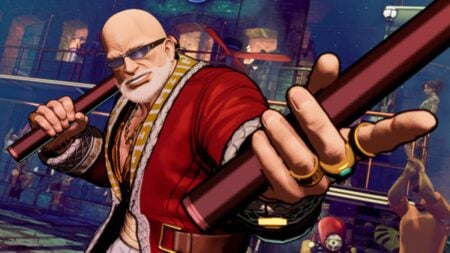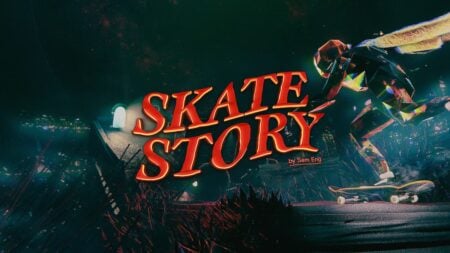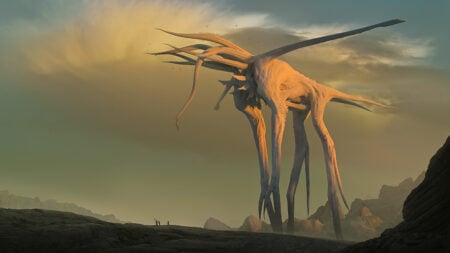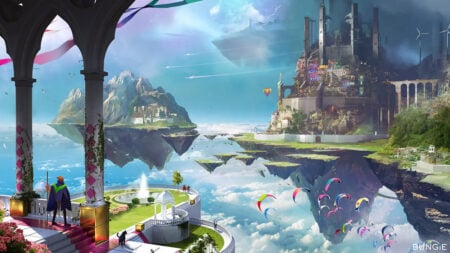Skip To...
Final Fantasy VII is regarded as one of the greatest video games ever. Even though more than 25 years have passed between now and its release in 1997, fans of gaming history will always refer back to it in one way or another. This is also why Square Enix is going to such great lengths to ensure its revival is one that players will never forget. Last month, The Nerd Stash was invited to Los Angeles, where we were shown a great deal of content for the Final Fantasy VII Rebirth preview. This included photo opportunities with the main voice cast, discussions with the game’s producer and director, and finally, playing through the first couple of hours of the game.
From the very moment we walked into the studio, we were enamored with everything done to ensure that nobody was ever taken out of the immersion that is this small slice of Gaia. While watching the footage, speaking with Square Enix personnel, and just sitting in the room, we felt like we were genuinely rediscovering Final Fantasy VII for the first time.
A Fresh Take On an Age-Old Story
Our time with the game took us through Cloud’s memories of what happened in Nibelheim on the fateful day he visited with former colleague Sephiroth. It was incredible to see scenes, places, and people that were once mere polygons on a screen come to life. Our biggest takeaway was the raw emotions that characters were able to display in response to the things happening around them. You could hear the gasps and startled breaths around the room as players reached particular points in the playable demo, feeling the same feelings as everyone onscreen. By the end, you could almost feel the development team smiling proudly at what they were able to achieve.
We were also delighted to discover new additions, including a card game titled Queen’s Blood. Fans of the Triple Triad card game from previous entries will probably have a bit of PTSD with this one. Similar to the latter, you play as either Red or Blue and are tasked with placing cards down on the board to earn points. You can challenge others in the overworld to the short mini-game that we can almost guarantee will be made into a physical game after release. Especially since a huge aspect of the mini-game is simply collecting more cards to add to your collection. What we played didn’t focus too much on this, however, we can expect there to be formidable challengers throughout the world.
Open World vs Random Encounters

In the Grasslands, we were met with an open world similar to that of Assassin’s Creed and other Ubisoft titles. There were far more places to explore with scalable buildings and mountainous landscapes. Of course, you won’t be performing any leaps of faith into hay bales below while atop buildings and structures. You’re encouraged to collect resources from the Grasslands and find treasures in all the buildings and secret areas. The map will even mark which areas you’ve looted, so you don’t need to backtrack. While we miss the original’s turn-based combat, we also enjoy that it was replaced with such a vivid world. Before, you were expected to go from place to place without question; you’re given much more room to breathe now. You’re also granted the ability to use a Chocobo pretty quickly, making travel that much easier.
Travel can also be stopped by enemy encounters, which allow you to choose between fighting or continuing on. You are never locked into battle, and when you do engage, you’re put into a hack-and-slash type fight. You can seamlessly switch between the players in your party to invoke the best strategies. However, we did notice that we needed to do this consistently as the AI wasn’t very attentive when combat got tough.
While we didn’t get a good look at all of the available weapons, Materia, and more, we can conclude that there will be a lot to discover—much of what we played involved tutorials on how to properly implement Materia and switch out weapons. With just the context we were provided from this, we could expect there to be much more usable Materia than in the previous installment. It also seemed as though we would get a variety of new weapons for those in your party.
Closing Thoughts

The title, Final Fantasy VII Rebirth, is precisely what it is: a rebirth of the series. We felt as though we were experiencing the story for the very first time. The characters, voices, locations, and music transported us to what felt like an entirely new world. We left the studio wishing we could have stayed wholly engrossed in the experience for just a bit longer. We weren’t ready to go back into the real world.
Our hope for the final release is to see its popularity transcend social media and internet culture the same way that titles like The Witcher 3: Wild Hunt or Grand Theft Auto V did on release. The fanbase curated by Final Fantasy as a whole and the power of the internet present a huge opportunity for more people to find community in one another. We can’t wait for all of the Cloud and Sephiroth edits to grace our phone screens just minutes after the official release.
Final Fantasy VII Rebirth will be available on February 29 for the PlayStation 5.


